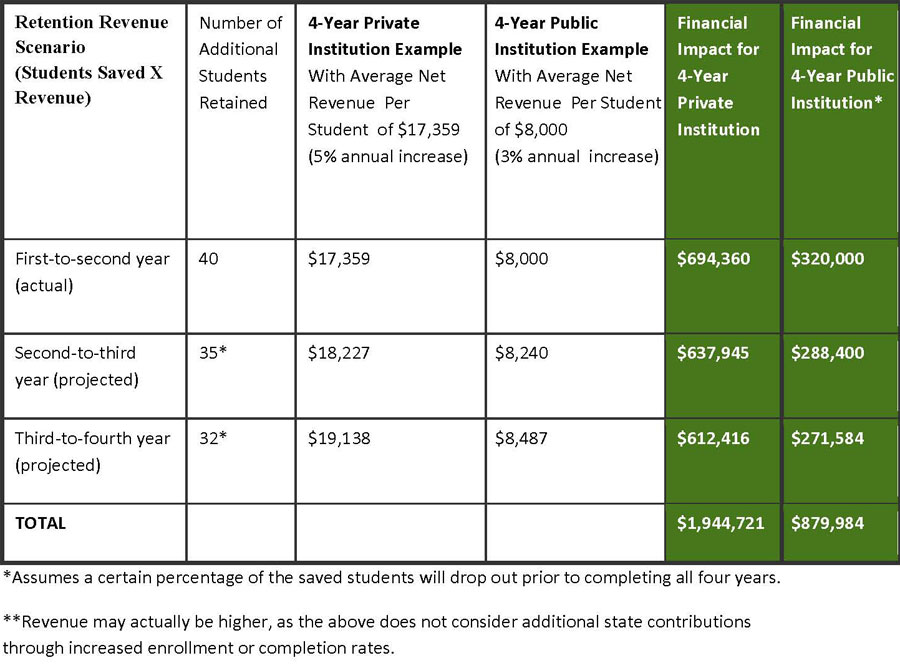enrollment
Is retention the key to your strategic enrollment management goals?
The following post greatly benefited from input from Dr. Brian Dalton
In recent years, the retention of currently enrolled students has gained more attention. As campuses fine-tune their strategic enrollment planning, national data suggest that retaining and graduating more students may be the critical next step for fiscal and enrollment success. The following findings from the NCES report, Persistence and Attainment of 2003–04 Beginning Postsecondary Students: After 6 Years, illustrate the completion challenge:
- Only 11.6 percent of students who start at community colleges earn a bachelor’s degree within six years.
- The bachelor’s degree graduation rate for students who start at public four-year institutions is 59.5 percent. At private non-profits, 64.6 percent. At for-profits, 15.7 percent. (Even taking into account that 14.6 percent of the latter students get associate’s degrees, compared to 3.8 at both public and private non-profits, that’s still a much lower number.)
- While 45 percent of recent high school graduates earn a bachelor’s degree in six years, nine percent of non-recent high school graduates do the same.
- Students who were 18 years old or younger when they started college in 2003 were ten times more likely to earn a bachelor’s degree than students who were 30 years or older.
- Among students who were always enrolled full-time while they were in school, 29.7 percent were not enrolled in college and had no degree six years after starting college. Among students who were always enrolled part-time, the equivalent number was 71.3 percent.
- Racial gaps widen as students move up the degree ladder. White students starting at two-year institutions have about the same likelihood as African-American students of earning a certificate, are 60 percent more likely to earn an associate’s degree, and are more than twice as likely to earn a bachelor’s degree. The graduation rate for white students starting at four-year institutions is 62.6 percent, compared to 40.5 percent for black students and 41.5 percent for Hispanic students.
- There’s almost a 30 percentage point gap (40.4 to 69.3) in the graduation rate for four-year students whose parents never went to college compared to students whose parents earned a bachelor’s degree or more.
- Most four-year students in the bottom income quartile don’t earn bachelor’s degrees on time (47.1 percent) whereas three-quarters of top-quartile students (76.4 percent) do.
While many campuses concern themselves with controlling the discount rate of entering students, far too few have undertaken the analysis of internal data that would illustrate the tremendous net revenue potential of improved student retention. Keep in mind the big picture: improved retention results in improved rates of graduation. From a strategic enrollment planning and implementation perspective, the dollar impact from retaining students could be a simple analysis:
Retention Revenue Scenario

These calculations may be conservative based on the institutional type.
While certainly there will be costs needed to implement strategies and to serve the additional students (additional faculty, increased advisors, increased co-curricular costs), the potential return on investment (ROI) is likely positive with the potential dollar amounts identified above. The reality is that many retention-related items cost little to implement and require more of a focused campus effort on student success. Attaining these goals relies mainly on the institution’s ability to make immediate changes to current enrollment practices and processes.